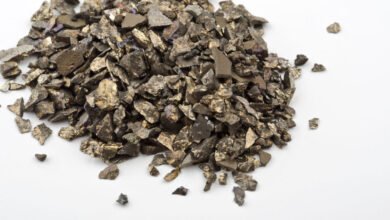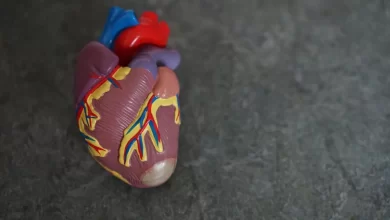RNA, or ribonucleic acid, is a type of nucleic acid that plays a critical role in gene expression and protein synthesis. RNA is composed of nucleotides, which are linked together by phosphodiester bonds. There are three main types of RNA: messenger RNA (mRNA), transfer RNA (tRNA), and ribosomal RNA (rRNA). mRNA is responsible for carrying genetic information from DNA to the ribosomes, where it is translated into protein by tRNA and rRNA. In addition to these three types of RNA, there are also several other types of non-coding RNA that play important regulatory roles in gene expression. These include microRNAs, long non-coding RNAs, and small interfering RNAs. RNA is essential to all living organisms, and its study has led to many important discoveries in molecular biology and biotechnology, including the development of RNA interference (RNAi) technology, which has revolutionized gene therapy and drug discovery.
- RNA was likely one of the first biomolecules to emerge during the evolution of life on Earth and may have played a crucial role in the early development of self-replicating systems.
- The first RNA molecule to be sequenced was the tRNA molecule, which Robert Holley determined in 1965.
- In some organisms, RNA is the primary genetic material instead of DNA. For example, in certain viruses, RNA carries the genetic information and serves as the template for protein synthesis.
- RNA is present in all living organisms, from single-celled bacteria to complex multicellular animals.
- RNA was first discovered in 1868 by Friedrich Miescher, who isolated a substance from the nuclei of white blood cells that he called “nuclein.”
- RNA is structurally similar to DNA, but it is usually single-stranded and contains the sugar ribose instead of deoxyribose.
- RNA is involved in many biological processes, including gene expression, protein synthesis, and the regulation of gene activity.
- The first RNA molecule to be sequenced was the tRNA molecule, which Robert Holley determined in 1965.
- RNA can adopt a wide range of three-dimensional structures, which are critical for its function. These structures include hairpins, loops, and bulges.
- RNA molecules can also act as enzymes, catalyzing chemical reactions such as the splicing of other RNA molecules.
- RNA interference (RNAi) is a mechanism by which RNA molecules can inhibit the expression of specific genes, and it has been used to develop new treatments for diseases such as cancer.
- RNA viruses, such as Spanish flu, HIV and SARS-CoV-2 or Covid 19, use RNA as their genetic material. They have been responsible for some of the most devastating infectious diseases in human history.
- The study of RNA has led to many important discoveries in molecular biology and biotechnology, and RNA-based therapeutics are now being developed to treat a wide range of diseases.
- RNA is involved in a variety of biological processes beyond gene expression and protein synthesis, such as DNA replication and repair, telomere maintenance, and regulation of chromatin structure.
- RNA molecules can exist in different conformations, such as A-form, B-form, and Z-form, depending on the sequence and environmental conditions.
- RNA can be chemically modified through processes such as methylation, acetylation, and phosphorylation, which can affect its stability and function.
- RNA molecules can interact with a variety of other molecules, including proteins, other RNAs, and small molecules, through a range of molecular recognition mechanisms such as base pairing, hydrogen bonding, and electrostatic interactions.
- Some RNA molecules, such as circular RNAs (circRNAs) and transfer RNAs (tRNAs), have been found to have functions beyond their traditional roles in gene expression and protein synthesis.
- The process of RNA splicing, in which non-coding sequences (introns) are removed from precursor messenger RNA (pre-mRNA), is an important mechanism for increasing the diversity of proteins that can be produced from a single gene.
- Small RNA molecules such as microRNAs (miRNAs) and small interfering RNAs (siRNAs) can regulate gene expression by binding to specific target mRNAs and inhibiting their translation or promoting their degradation.
- The discovery of RNA catalysis, or ribozymes, challenged the long-held belief that only proteins could act as enzymes.
- The study of RNA has led to the development of powerful research tools such as RNA interference (RNAi) and CRISPR/Cas9 genome editing, which have transformed our ability to manipulate and study gene expression.
- RNA-based vaccines, such as those developed for COVID-19, are a promising new approach to preventing and treating RNA infectious diseases.
- The discovery of RNA catalysis led to the idea that RNA may have been the first self-replicating molecule and may have served as a precursor to DNA-based life.
- RNA viruses can rapidly evolve and adapt to changing environmental conditions, which is one reason they can be difficult to treat and control.
- Riboswitches are RNA molecules that can regulate gene expression by binding to specific small molecules, such as metabolites or cofactors.
- RNA editing is a process in which the sequence of an RNA molecule is altered by chemical modification or insertion/deletion of nucleotides.
- Small nucleolar RNAs (snoRNAs) are involved in modifying and processing other RNAs, such as ribosomal RNA (rRNA).
- Long non-coding RNAs (lncRNAs) are RNA molecules that are longer than 200 nucleotides and do not code for proteins. They are involved in a variety of cellular processes, including chromatin modification, transcriptional regulation, and RNA processing.
- Circular RNAs (circRNAs) are RNA molecules that form a closed loop and are resistant to degradation by exonucleases.
- RNA thermometers are regulatory RNA molecules that control gene expression in response to changes in temperature.
- RNA molecules can also form complexes with proteins to create ribonucleoprotein (RNP) particles, which can perform various functions, such as catalyzing chemical reactions or regulating gene expression.
- RNA can undergo alternative splicing, in which different combinations of exons and introns are spliced together to create different mRNA isoforms, thereby increasing the diversity of the proteome.






